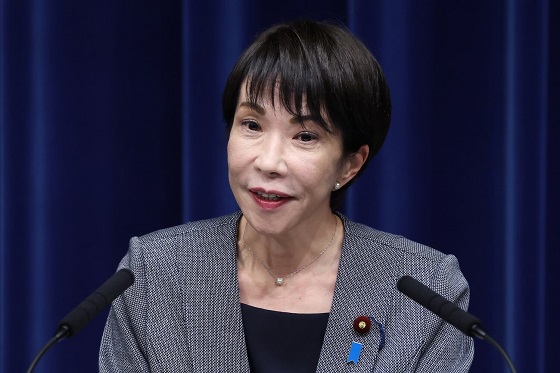Alberta
Alberta Budget 2024 – Health, Education, and Affordability announcements

Putting Albertans and Alberta families first
Budget 2024 is a responsible plan that puts Albertans and their families first by investing in strong health care, a modern education system and supports to keep life affordable.
Alberta’s government will ensure that the services and supports Alberta families rely on will be there for them. Budget 2024 continues to prioritize the delivery of high-quality, reliable health services across the province, with funding to continue planning the stand-alone Stollery Children’s Hospital, attract family physicians to rural areas and add more mental health and addiction facilities.
“With Budget 2024, we are ensuring that our province remains the best place to live and raise a family. We are investing in programs and services like new school builds, improved access to doctors and affordable housing to help Albertans stay healthy and build a successful future for themselves and their families.”
Budget 2024 highlights – Health care
- $475 million to modernize Alberta’s primary health care system, including:
- $200 million over two years to improve access to family physicians.
- $10 million for primary health care initiatives in Indigenous communities.
- $15 million to further develop a compensation model for nurse practitioners.
- $6.6 billion for physician compensation and development, up from $6.1 billion in Budget 2023.
- $1 billion over three years to transform the continuing care system to shift care to the community, enhance workforce capacity, increase choice and innovation, and improve the quality of care within the continuing care sector.
- $287 million over four years, part of a bilateral agreement with the federal government, for new mental health and addiction facilities, as well as for targeted supports for children and youth, adults and Indigenous communities.
- $62.4 million over three years to create two rural health professional training centres and expand physician education.
- $20 million over the next three years, including $17 million in new funding, to continue planning for a stand-alone Stollery Children’s Hospital.
- $35 million in capital funding over the next three years to purchase new emergency medical services vehicles and ambulances, upgrade the existing fleet and acquire additional equipment.
- $10 million over the next three years to create additional mental health professional spaces in post-secondary schools.
- $1.55-billion total expense to continue building the Alberta Recovery Model and ensure anyone suffering from the deadly disease of addiction or facing mental health challenges has an opportunity to pursue recovery.
“In Budget 2024, Alberta’s government is continuing to prioritize the delivery of high-quality, reliable health services across the province. This year’s record investment of $26.2 billion in health care will help us continue toward our goals of improving primary health care, adding capacity, reducing wait times, growing the workforce and advancing the Healthcare Action Plan.”
“Budget 2024 gives hope to those suffering from the deadly disease of addiction or facing mental health challenges. We are proud to invest in the Alberta Recovery Model and provide life-saving addiction treatment and care for those in need.”
Budget 2024 invests in a bright future for Alberta students with new and modernized schools, learning supports for students of all abilities and post-secondary programs to help build a skilled workforce.
Budget 2024 highlights – K-12 and post-secondary education
- $1.9 billion in capital funding over the next three years for planning, design or construction of new and modernized school projects across the province. This includes $681 million in new funding for 43 priority projects that will create 35,000 new or modernized student spaces.
- A total of 98 school projects are in various stages of the planning, design and construction process in 2024.
- $842 million in new operating funding over the next three years to further support enrolment growth, bringing additional enrolment-based funding to more than $1.2 billion over the next three years to enable schools to hire more than 3,100 education staff.
- More than $1.5-billion operating expense funding for educational learning supports for vulnerable students, children with specialized learning needs and other students requiring additional supports.
- $26 million over the next three years in additional funding for Program Unit Funding (PUF). PUF will total $209 million in the 2024-25 fiscal year.
- $103 million in capital funding over three years to increase modular classroom spaces to address the most urgent needs for additional student spaces across the province.
- $55 million in capital funding starting in 2025-26 for the University of Calgary’s multidisciplinary hub to add 1,000 spaces in science, technology, engineering and math (STEM) programs.
- $63 million in capital funding over the next three years for Olds College to renovate and expand student spaces in the WJ Elliot Building.
- $43 million in capital funding over the next three years for NAIT’s trades and technology learning facility.
- $13 million in capital funding over the next three years for Red Deer Polytechnic to create a new space to help businesses conduct applied research.
“The Alberta Advantage is back and booming, and people from across Canada and around the world are once again flocking to our incredible province. This of course puts added pressures on our schools, and our government is ready to help. Budget 2024 will support 43 new school projects to create and update 35,000 more student spaces. We’re providing $842 million in new funding to help our school boards hire more than 3,000 teachers and educational staff over the next three years. We will also boost funding to vulnerable students by increasing funding to the PUF program by $26 million.”
“Demand for skilled trades workers and graduates from STEM programs is projected to increase as our economy continues to grow and diversify. That’s why Alberta’s government is making targeted investments in post-secondary institutions to create more opportunities for students in high-demand fields of study.”
Although inflation is expected to ease this year, many families are still struggling with high grocery and utility costs. Budget 2024 helps keep life affordable and supports Albertans most affected by inflation.
Budget 2024 highlights – Affordability
- $717 million in capital grants to give Albertans and families access to more affordable housing, in line with Stronger Foundations – Alberta’s 10-year strategy designed to increase affordable housing supply and supports for Albertans.
- $355 million for the Alberta Child and Family Benefit to provide lower-income families with benefits, an increase of $31 million from last fiscal year.
- $980 million in savings for Albertans in 2024-25 because of indexation of personal income taxes.
- Budget 2024 formalizes the schedule to phase in a new personal income tax bracket on the first $60,000 of income, which would save individual taxpayers up to $760 per year once the tax cut is fully implemented.
- 25 per cent discount for seniors on personal registry services and medical driving tests, scheduled to come into effect in 2024-25.
- $38-million increase to operational funding for the Seniors Lodge, Social Housing and Specialized Housing and Rental Assistance programs in 2024-25.
- $22 million increased operating expense over the next three years to index foster, kinship and other caregiver rates, which will support stronger foundations for children in care and provide them with the care and protection they need for a brighter and secure future.
“With each strategic investment in affordable housing, reducing homelessness and supporting our seniors and people with disabilities, we are strengthening our communities and empowering vulnerable Albertans to thrive and succeed.”
“Our government is helping make life easier and more affordable for Alberta families. By helping foster caregivers increase stability for children and youth in care, and ensuring survivors of domestic and sexual violence have the resources they need to heal, we’re enabling connections that will lead to a brighter future for Alberta families.”
Budget 2024 is a responsible plan to strengthen health care and education, build safe and supportive communities, manage the province’s resources wisely and promote job creation to continue to build Alberta’s competitive advantage.
Alberta
Alberta project would be “the biggest carbon capture and storage project in the world”

Pathways Alliance CEO Kendall Dilling is interviewed at the World Petroleum Congress in Calgary, Monday, Sept. 18, 2023.THE CANADIAN PRESS/Jeff McIntosh
From Resource Works
Carbon capture gives biggest bang for carbon tax buck CCS much cheaper than fuel switching: report
Canada’s climate change strategy is now joined at the hip to a pipeline. Two pipelines, actually — one for oil, one for carbon dioxide.
The MOU signed between Ottawa and Alberta two weeks ago ties a new oil pipeline to the Pathways Alliance, which includes what has been billed as the largest carbon capture proposal in the world.
One cannot proceed without the other. It’s quite possible neither will proceed.
The timing for multi-billion dollar carbon capture projects in general may be off, given the retreat we are now seeing from industry and government on decarbonization, especially in the U.S., our biggest energy customer and competitor.
But if the public, industry and our governments still think getting Canada’s GHG emissions down is a priority, decarbonizing Alberta oil, gas and heavy industry through CCS promises to be the most cost-effective technology approach.
New modelling by Clean Prosperity, a climate policy organization, finds large-scale carbon capture gets the biggest bang for the carbon tax buck.
Which makes sense. If oil and gas production in Alberta is Canada’s single largest emitter of CO2 and methane, it stands to reason that methane abatement and sequestering CO2 from oil and gas production is where the biggest gains are to be had.
A number of CCS projects are already in operation in Alberta, including Shell’s Quest project, which captures about 1 million tonnes of CO2 annually from the Scotford upgrader.
What is CO2 worth?
Clean Prosperity estimates industrial carbon pricing of $130 to $150 per tonne in Alberta and CCS could result in $90 billion in investment and 70 megatons (MT) annually of GHG abatement or sequestration. The lion’s share of that would come from CCS.
To put that in perspective, 70 MT is 10% of Canada’s total GHG emissions (694 MT).
The report cautions that these estimates are “hypothetical” and gives no timelines.
All of the main policy tools recommended by Clean Prosperity to achieve these GHG reductions are contained in the Ottawa-Alberta MOU.
One important policy in the MOU includes enhanced oil recovery (EOR), in which CO2 is injected into older conventional oil wells to increase output. While this increases oil production, it also sequesters large amounts of CO2.
Under Trudeau era policies, EOR was excluded from federal CCS tax credits. The MOU extends credits and other incentives to EOR, which improves the value proposition for carbon capture.
Under the MOU, Alberta agrees to raise its industrial carbon pricing from the current $95 per tonne to a minimum of $130 per tonne under its TIER system (Technology Innovation and Emission Reduction).
The biggest bang for the buck
Using a price of $130 to $150 per tonne, Clean Prosperity looked at two main pathways to GHG reductions: fuel switching in the power sector and CCS.
Fuel switching would involve replacing natural gas power generation with renewables, nuclear power, renewable natural gas or hydrogen.
“We calculated that fuel switching is more expensive,” Brendan Frank, director of policy and strategy for Clean Prosperity, told me.
Achieving the same GHG reductions through fuel switching would require industrial carbon prices of $300 to $1,000 per tonne, Frank said.
Clean Prosperity looked at five big sectoral emitters: oil and gas extraction, chemical manufacturing, pipeline transportation, petroleum refining, and cement manufacturing.
“We find that CCUS represents the largest opportunity for meaningful, cost-effective emissions reductions across five sectors,” the report states.

Fuel switching requires higher carbon prices than CCUS.
Measures like energy efficiency and methane abatement are included in Clean Prosperity’s calculations, but again CCS takes the biggest bite out of Alberta’s GHGs.
“Efficiency and (methane) abatement are a portion of it, but it’s a fairly small slice,” Frank said. “The overwhelming majority of it is in carbon capture.”

From left, Alberta Minister of Energy Marg McCuaig-Boyd, Shell Canada President Lorraine Mitchelmore, CEO of Royal Dutch Shell Ben van Beurden, Marathon Oil Executive Brian Maynard, Shell ER Manager, Stephen Velthuizen, and British High Commissioner to Canada Howard Drake open the valve to the Quest carbon capture and storage facility in Fort Saskatchewan Alta, on Friday November 6, 2015. Quest is designed to capture and safely store more than one million tonnes of CO2 each year an equivalent to the emissions from about 250,000 cars. THE CANADIAN PRESS/Jason Franson
Credit where credit is due
Setting an industrial carbon price is one thing. Putting it into effect through a workable carbon credit market is another.
“A high headline price is meaningless without higher credit prices,” the report states.
“TIER credit prices have declined steadily since 2023 and traded below $20 per tonne as of November 2025. With credit prices this low, the $95 per tonne headline price has a negligible effect on investment decisions and carbon markets will not drive CCUS deployment or fuel switching.”
Clean Prosperity recommends a kind of government-backstopped insurance mechanism guaranteeing carbon credit prices, which could otherwise be vulnerable to political and market vagaries.
Specifically, it recommends carbon contracts for difference (CCfD).
“A straight-forward way to think about it is insurance,” Frank explains.
Carbon credit prices are vulnerable to risks, including “stroke-of-pen risks,” in which governments change or cancel price schedules. There are also market risks.
CCfDs are contractual agreements between the private sector and government that guarantees a specific credit value over a specified time period.
“The private actor basically has insurance that the credits they’ll generate, as a result of making whatever low-carbon investment they’re after, will get a certain amount of revenue,” Frank said. “That certainty is enough to, in our view, unlock a lot of these projects.”
From the perspective of Canadian CCS equipment manufacturers like Vancouver’s Svante, there is one policy piece still missing from the MOU: eligibility for the Clean Technology Manufacturing (CTM) Investment tax credit.
“Carbon capture was left out of that,” said Svante co-founder Brett Henkel said.
Svante recently built a major manufacturing plant in Burnaby for its carbon capture filters and machines, with many of its prospective customers expected to be in the U.S.
The $20 billion Pathways project could be a huge boon for Canadian companies like Svante and Calgary’s Entropy. But there is fear Canadian CCS equipment manufacturers could be shut out of the project.
“If the oil sands companies put out for a bid all this equipment that’s needed, it is highly likely that a lot of that equipment is sourced outside of Canada, because the support for Canadian manufacturing is not there,” Henkel said.
Henkel hopes to see CCS manufacturing added to the eligibility for the CTM investment tax credit.
“To really build this eco-system in Canada and to support the Pathways Alliance project, we need that amendment to happen.”
Resource Works News
Alberta
Alberta Next Panel calls for less Ottawa—and it could pay off

From the Fraser Institute
By Tegan Hill
Last Friday, less than a week before Christmas, the Smith government quietly released the final report from its Alberta Next Panel, which assessed Alberta’s role in Canada. Among other things, the panel recommends that the federal government transfer some of its tax revenue to provincial governments so they can assume more control over the delivery of provincial services. Based on Canada’s experience in the 1990s, this plan could deliver real benefits for Albertans and all Canadians.
Federations such as Canada typically work best when governments stick to their constitutional lanes. Indeed, one of the benefits of being a federalist country is that different levels of government assume responsibility for programs they’re best suited to deliver. For example, it’s logical that the federal government handle national defence, while provincial governments are typically best positioned to understand and address the unique health-care and education needs of their citizens.
But there’s currently a mismatch between the share of taxes the provinces collect and the cost of delivering provincial responsibilities (e.g. health care, education, childcare, and social services). As such, Ottawa uses transfers—including the Canada Health Transfer (CHT)—to financially support the provinces in their areas of responsibility. But these funds come with conditions.
Consider health care. To receive CHT payments from Ottawa, provinces must abide by the Canada Health Act, which effectively prevents the provinces from experimenting with new ways of delivering and financing health care—including policies that are successful in other universal health-care countries. Given Canada’s health-care system is one of the developed world’s most expensive universal systems, yet Canadians face some of the longest wait times for physicians and worst access to medical technology (e.g. MRIs) and hospital beds, these restrictions limit badly needed innovation and hurt patients.
To give the provinces more flexibility, the Alberta Next Panel suggests the federal government shift tax points (and transfer GST) to the provinces to better align provincial revenues with provincial responsibilities while eliminating “strings” attached to such federal transfers. In other words, Ottawa would transfer a portion of its tax revenues from the federal income tax and federal sales tax to the provincial government so they have funds to experiment with what works best for their citizens, without conditions on how that money can be used.
According to the Alberta Next Panel poll, at least in Alberta, a majority of citizens support this type of provincial autonomy in delivering provincial programs—and again, it’s paid off before.
In the 1990s, amid a fiscal crisis (greater in scale, but not dissimilar to the one Ottawa faces today), the federal government reduced welfare and social assistance transfers to the provinces while simultaneously removing most of the “strings” attached to these dollars. These reforms allowed the provinces to introduce work incentives, for example, which would have previously triggered a reduction in federal transfers. The change to federal transfers sparked a wave of reforms as the provinces experimented with new ways to improve their welfare programs, and ultimately led to significant innovation that reduced welfare dependency from a high of 3.1 million in 1994 to a low of 1.6 million in 2008, while also reducing government spending on social assistance.
The Smith government’s Alberta Next Panel wants the federal government to transfer some of its tax revenues to the provinces and reduce restrictions on provincial program delivery. As Canada’s experience in the 1990s shows, this could spur real innovation that ultimately improves services for Albertans and all Canadians.
-

 Business1 day ago
Business1 day agoWhat Do Loyalty Rewards Programs Cost Us?
-

 Business14 hours ago
Business14 hours agoLand use will be British Columbia’s biggest issue in 2026
-

 Business12 hours ago
Business12 hours agoMainstream media missing in action as YouTuber blows lid off massive taxpayer fraud
-

 Energy15 hours ago
Energy15 hours agoWhy Japan wants Western Canadian LNG
-

 Haultain Research1 day ago
Haultain Research1 day agoSweden Fixed What Canada Won’t Even Name
-

 Business11 hours ago
Business11 hours agoStripped and shipped: Patel pushes denaturalization, deportation in Minnesota fraud
-

 Energy3 hours ago
Energy3 hours agoRulings could affect energy prices everywhere: Climate activists v. the energy industry in 2026
-

 Digital ID1 hour ago
Digital ID1 hour agoThe Global Push for Government Mandated Digital IDs And Why You Should Worry





